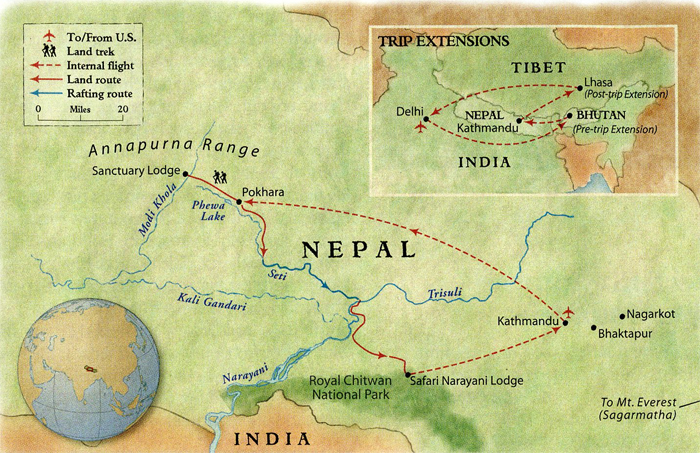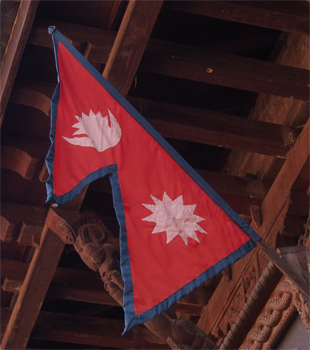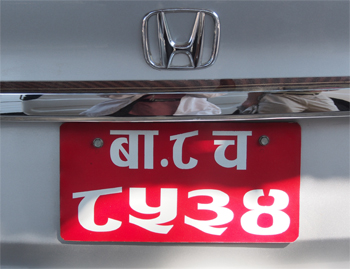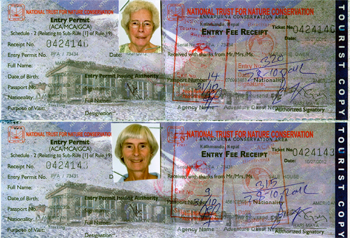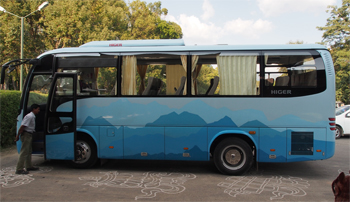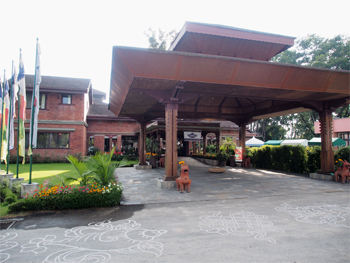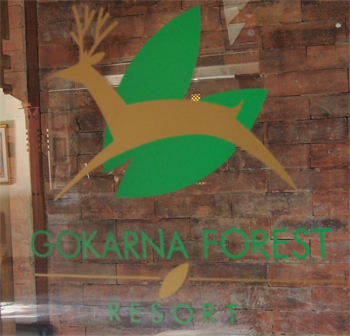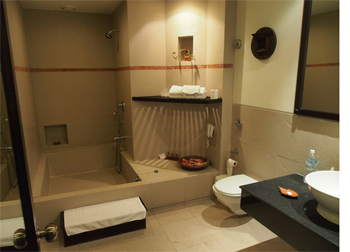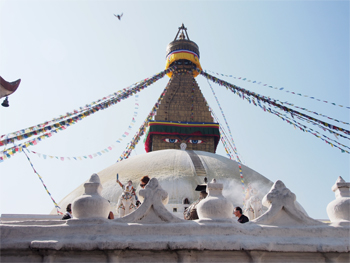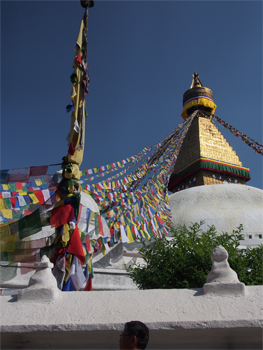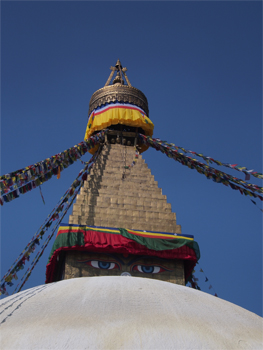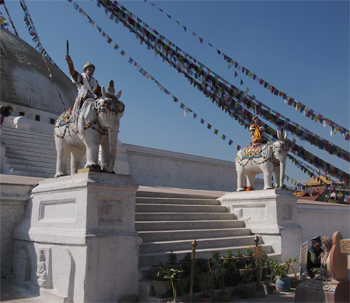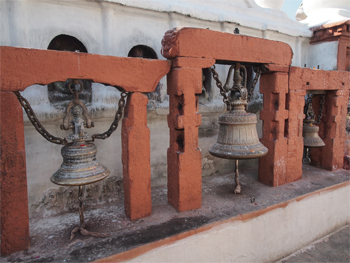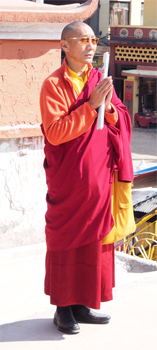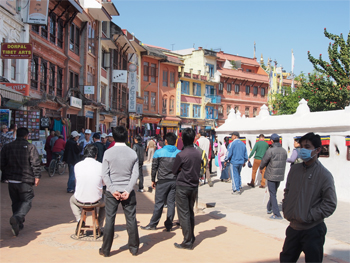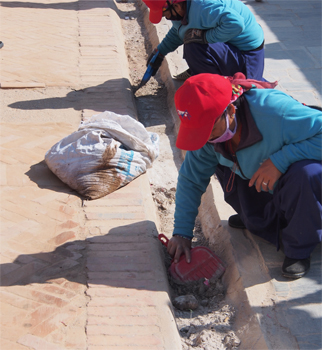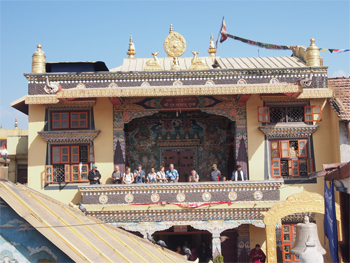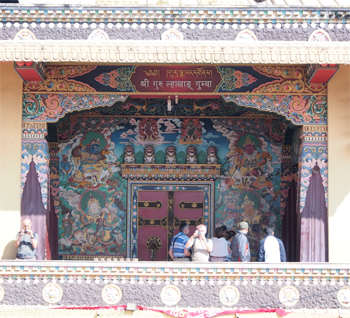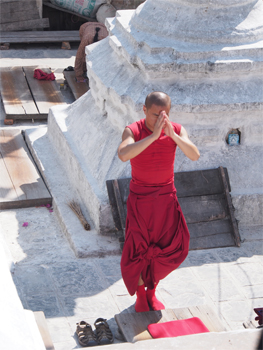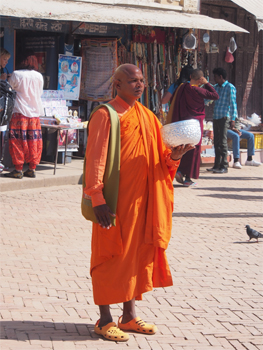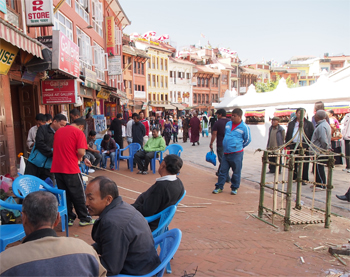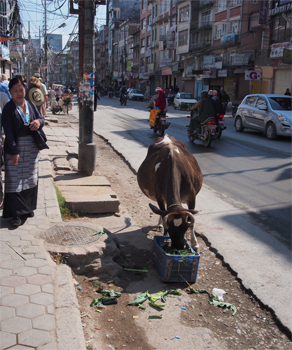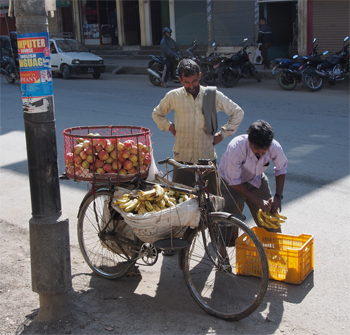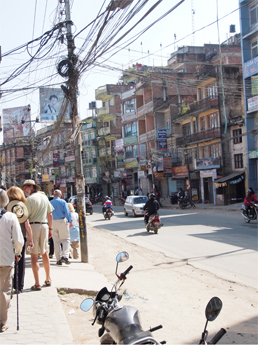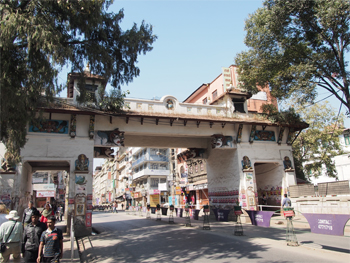Thurs., 10/25/12 - Thimphu to Paro to Kathmandu, Nepal
We had an early breakfast and then the bus ride back to Paro. We flew on Drukair to Kathmandu and met our next OAT tour leader, Manoj. We drove through dirty, crowded Kathmandu to our resort outside the city.
Manoj began giving us information about Nepal. The population is mainly Aryan (light skin), Mongolian (Chinese features), and Dravidian (darker Indian features), but there are 92 sects (cultural groups) with regional dialects. In 1768 the first king unified the many Nepalese kingdoms and the rest of the 13 kings did nothing for the populace except collect taxed and spend the money themselves. In 2006 the people revolted and ended the monarchy in Nepal. Now there are 30 political parties but the three top ruling parties are Maoists (a political designation, not Chinese) and two others who formed a coalition. The parliament officials receive ten times the average Nepalese salary. In 2008 parliament was charged with the task of writing a new constitution. Four years later, not one page has been written and the government does nothing. There are no zoning or building codes for the cities, the roads are not maintained, trash is only collected occasionally, and electric and sewer service is catch-as-catch-can. Corruption is rife. Most of the government leaders are illiterate. Nepal is able to export apples, oranges, tea and cardamom on the global market.
After a nap, a briefing about the days to come and some laundry, we had a nice Thai dinner at the golf clubhouse.
In Nepal we flew, bused, hiked, rafted, boated, and rode elephants. Quite an assortment of modes of transportation!
|
|
The flag of Nepal
|
A Nepalese license plate |
Entry permit into Nepal
|
Our Nepalese chariot |
Entry to the Gokarna Forest Resort
|
Gokarna Forest Resort is a golf course in the jungle and very upscale (for Nepal). We have to keep our windows closed because there are Rhesus monkeys running around the grounds and on the roofs.
|
Logo
|
Bathroom with a rather interesting "bath tub" |
Our first stop this morning was at the Great Stupa of Boudhanath, which is one of Nepal's four UNESCO World Heritage Sites. It is the oldest stupa in Nepal and was built in the 5th or 6th century CE. It is one of the most important pilgrimage places for Buddhists. As you entered you were to ring the bell to tell the gods that you are here. It is also rung when you leave. Some of the incense that is burned at the site is crushed pine needles. There are prayer flags suspended from the dome of the stupa to the four corners and prayer wheels along the outer walls.
|
|
Great Stupa of Boudhanath |
Great Stupa of Boudhanath
|
Great Stupa of Boudhanath - the eyes have it!
|
Great Stupa of Boudhanath - main entry |
Bells which are rung before entering and after leaving the stupa |
A monk praying
|
Shops surrounding the Great Stupa of Boudhanath |
Ladies doing repairs on the gutter
|
Hotel/restaurant across from the Great Stupa of Boudhanath |
Hotel/restaurant across from the Great Stupa of Boudhanath
|
Smaller stupa on the grounds
|
Monk praying |
Monk begging? or selling a bowl?
|
As we walked around the Great Stupa of Boudhanath we came upon a family that had just had a death in the family. The family members were preparing for the funeral and cremation ceremony.
|
Preparing for the cremation ceremony |
Preparing for the cremation ceremony
|
Kathmandu street scene, very typical
|
Kathmandu street scene, very typical |
Kathmandu street scene, very typical
|
Walking to Durbar Square |
Return to Top Return to Bhutan/Nepal Itinerary Return to Dreamcatcher Home Page
